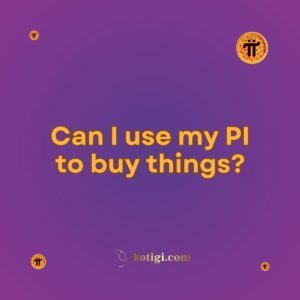
What is the timeline for the mainnet launch of Pi Network?
The mainnet launch of Pi Network is a significant milestone in its development, transitioning from a test phase to a fully operational blockchain. Pi Network will officially transition to the Open Network period of Mainnet at 8:00AM UTC on February 20, 2025
Introduction
The Pi Network has captured the attention of cryptocurrency enthusiasts and casual users alike, primarily due to its innovative approach to mining and community engagement. As a project that allows users to mine Pi coins using their mobile devices, it has fostered a growing user base that eagerly anticipates the transition from its current test phase to the mainnet launch. This shift is vital as it represents Pi Network’s full entry into the blockchain ecosystem, allowing for broader functionalities and real-world applications of its cryptocurrency. This article delves into the timeline for the mainnet launch of Pi Network, outlining key milestones, updates, and what users can expect as the project evolves.
Table of timeline for the mainnet launch of Pi Network
Here’s a table summarizing the phases of Pi Network development, along with an analysis of each phase:
| Phase | Description | Key Milestones | Expected Features |
|---|---|---|---|
| Phase 1: Testnet Launch | Initial phase where users mine Pi coins on a test network. | – Launch of testnet – User engagement and feedback | – Data collection on user behavior – Basic mining functionality |
| Phase 2: Transition Preparations | Preparation for the transition to the mainnet with community updates. | – Announcements regarding mainnet – Community feedback | – Enhanced user experience – Key feature discussions |
| Phase 3: Mainnet Launch Timeline | Targeted timeline for the official mainnet launch based on development progress. | – Setting realistic timelines – Key milestones achievement | – Full blockchain functionality – Enhanced security features |
| Post-Launch | Ongoing developments and feature enhancements after the mainnet launch. | – Continuous updates – Community governance establishment | – Decentralized applications (dApps) – Ongoing feature enhancements |
Analysis of the Phases
- Phase 1: Testnet Launch
- Significance: This phase is crucial as it establishes the foundational mechanics of the Pi Network. The ability for users to mine Pi coins on a mobile device attracts a wide audience, particularly those new to cryptocurrency.
- User Engagement: By encouraging users to participate actively in mining and providing feedback, Pi Network builds a community-driven development approach. This engagement is essential for ensuring that the platform meets user needs and expectations.
- Data Collection: Gathering data during this phase allows developers to analyze user behavior, system performance, and potential issues, informing future enhancements.
- Phase 2: Transition Preparations
- Focus on Communication: The announcements regarding the transition to the mainnet demonstrate the importance of transparency in building user trust. Regular updates about the roadmap help users feel involved and informed.
- Key Features Discussion: Engaging users in discussions about the features of the mainnet ensures that the development aligns with community expectations. This user-centric approach can lead to higher satisfaction and adoption rates post-launch.
- Phase 3: Mainnet Launch Timeline
- Realistic Expectations: By setting achievable timelines, the Pi Network team avoids potential backlash from the community that might arise from over-promising and under-delivering. This strategy helps maintain user confidence.
- Security and Functionality: The emphasis on security features reflects the industry’s growing concern over cybersecurity in blockchain projects. Ensuring robust security measures will be vital for gaining and maintaining user trust.
- Post-Launch
- Continuous Development: The commitment to ongoing development and feature enhancements post-launch indicates a dedication to improving the platform continually. This adaptability is crucial for staying competitive in the rapidly evolving blockchain landscape.
- Decentralized Applications (dApps): The introduction of dApps opens up a myriad of possibilities for users and developers alike, fostering innovation within the Pi Network ecosystem. It also allows for greater utility of the Pi currency, enhancing its value proposition.
Phase 1: The Testnet Launch
The Pi Network began its journey with the launch of its testnet, allowing users to mine Pi coins without the need for significant computational power. This phase aimed to gather data on user behavior, network performance, and overall system viability.
Importance of Testnet
The testnet phase provided invaluable insights that would inform future developments. It allowed the developers to identify potential challenges and enhance the user experience based on community feedback. The focus was on establishing a stable foundation for the network’s eventual transition to the mainnet.
Community Involvement
Throughout this phase, community involvement was crucial. Users participated in testing the network, reporting issues, and suggesting improvements. This collaborative approach helped ensure that the final product would meet the expectations of its growing user base.
Phase 2: Transition to Mainnet Preparations
Announcements and Updates
As Pi Network progressed, the development team began to release updates regarding the transition to the mainnet. These announcements were crucial for maintaining user engagement and trust.
Key Features of the Mainnet
During this phase, discussions surrounding the key features of the mainnet began to surface. These features would include enhanced security protocols, improved transaction speeds, and the introduction of decentralized applications (dApps) on the Pi Network.
Setting Expectations
The developers aimed to set realistic expectations for users regarding the timeline and functionalities of the mainnet. Clear communication about what the mainnet would entail helped to align user expectations with the project’s vision.
Phase 3: Mainnet Launch Timeline
Initial Projections
Initial projections for the mainnet launch were optimistic, with many users speculating that the launch would occur within a specific timeframe following the testnet phase. However, the development team emphasized the need for thorough testing and refinement before the official launch.
Current Timeline
As of now, the Pi Network team has indicated that they are targeting a specific timeline for the mainnet launch. This timeline is subject to change based on ongoing development and testing progress. Users are encouraged to stay updated through official channels for the most accurate information.
Milestones Leading to Launch
Several key milestones must be achieved before the mainnet launch. These include finalizing the codebase, conducting comprehensive security audits, and engaging with the community for feedback and testing. Each of these milestones contributes to a smoother and more successful launch.
Anticipated Features Post-Launch
Enhanced Security Features
One of the primary focuses for the mainnet launch is implementing robust security measures. This includes advanced encryption protocols and multi-signature functionalities to safeguard user assets and transactions.
Decentralized Applications (dApps)
The introduction of dApps is a significant feature anticipated post-launch. These applications will expand the use cases of Pi Network, allowing developers to create innovative solutions that leverage the network’s capabilities.
Governance and Community Engagement
Post-launch, there will be a focus on establishing governance mechanisms that empower the community to participate in decision-making processes. This governance model aims to enhance transparency and user involvement in the network’s development.
User Expectations and Preparations
How to Prepare for Mainnet Launch
As the mainnet launch approaches, users should take proactive steps to prepare. This includes ensuring they have a secure Pi wallet and understanding the functionalities that will be available post-launch.
Staying Informed
Users are encouraged to stay informed by following official Pi Network channels, including social media, forums, and newsletters. These platforms will provide critical updates and information leading up to the launch.
Community Engagement
Engaging with the Pi Network community through forums and social media can help users connect with others, share insights, and stay updated on the latest developments. This collaborative spirit will enhance the overall experience as the network transitions to the mainnet.
Challenges and Considerations
Technical Challenges
As with any blockchain project, technical challenges can arise during the transition to the mainnet. Developers must address issues related to scalability, security, and user experience to ensure a successful launch.
User Adaptation
Users may need to adapt to new functionalities and features post-launch. Providing educational resources and support can help ease this transition and empower users to make the most of the new system.
Ongoing Development
The Pi Network team emphasizes that development will continue even after the mainnet launch. Regular updates and enhancements will ensure that the network remains competitive and meets the evolving needs of its users.
Conclusion
The timeline for the mainnet launch of Pi Network represents a significant turning point in the project’s evolution. As the community eagerly anticipates this transition, it is essential to recognize the milestones, features, and preparations required for a successful launch. By staying informed and engaged, users can play a crucial role in shaping the future of Pi Network and embracing the opportunities it presents within the cryptocurrency landscape.
Key Takeaways
| Key Takeaway | Details |
|---|---|
| Phased Development | Pi Network follows a phased development approach, starting with the testnet and transitioning to the mainnet. |
| Community Involvement | User feedback and participation are crucial throughout the development phases, influencing key decisions. |
| Mainnet Features | Enhanced security, decentralized applications, and community governance are key features anticipated in the mainnet. |
| Preparation for Launch | Users should prepare by securing their wallets and staying informed about updates and changes. |
| Addressing Challenges | Technical and user adaptation challenges will need to be managed for a successful transition to the mainnet. |
| Continuous Development | Ongoing development efforts will continue post-launch to improve and adapt to user needs. |





